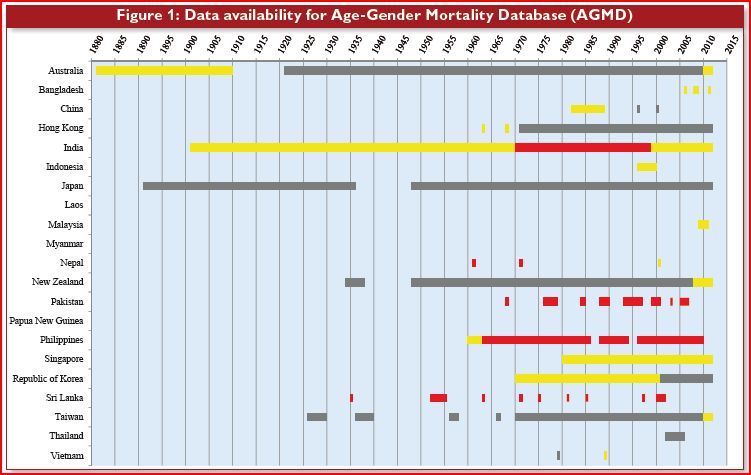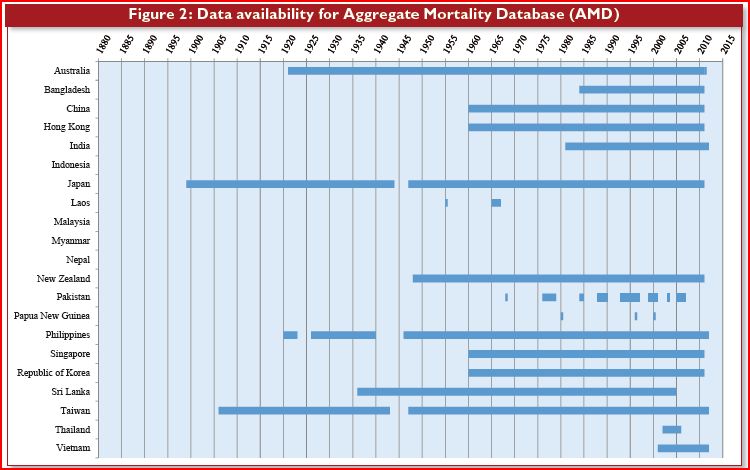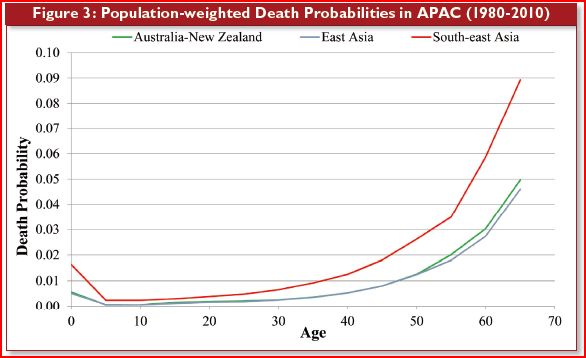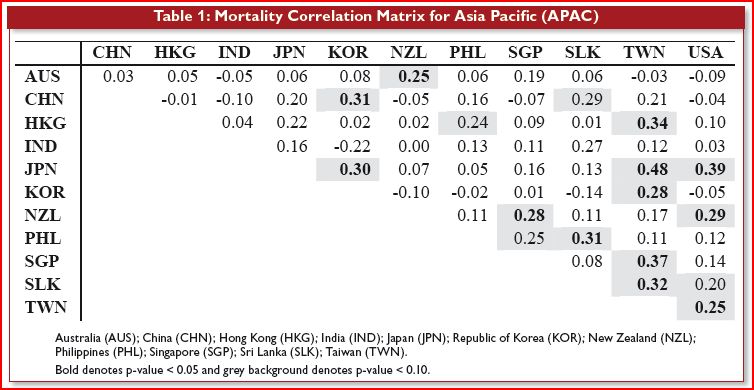Dr Andreas Milidonis from the Nanyang Business School at Nanyang Technological University shares his views about the “Multi-population Mortality Risk” project where they endeavour to build a comprehensive mortality database for the region for analysis and to shed light into risk-sharing opportunities in the Asia Pacific region.
Motivated by scarcity of available mortality data, and high growth opportunities in the insurance and reinsurance industry in the Asia-Pacific (APAC) region, the project “Multi-population Mortality Risk” conducted by the Insurance Risk and Finance Research Centre (IRFRC) aims to add value to the industry and academia in the following three ways.
First, we aim to build a comprehensive mortality database for the region that will comprise data from its most populous countries.
Second, our analysis will identify common cross-sectional and time-series trends in mortality risk in the region and highlight the presence of statistically and economically significant correlations and predictability relationships among mortality indices. Correlation is relevant for portfolio optimisation, diversification and basis risk in longevity financing transactions.
Third, since mortality-longevity risk financing is more developed and homogeneously evolving in countries like the US, Canada and several EU countries, we seek to understand the mortality-longevity dynamics in the highly heterogeneous APAC region in relation to these more developed markets.
What is the current state of the data collection exercise?
We target the largest markets, ranked by population, in the Asia-Pacific and Oceania regions. These are: Australia, Bangladesh, China, Hong Kong, India, Indonesia, Japan, Laos, Malaysia, Myanmar, Nepal, New Zealand, Pakistan, Papua New Guinea, Philippines, Republic of Korea, Singapore, Sri Lanka, Taiwan, Thailand and Vietnam.
Data sources have been identified from academic and industry publications. In summary, our search for studies on mortality-longevity for each of the listed countries above, yielded only a few primarily academic articles, most of which focused on Australia, Taiwan, Japan and New Zealand.
Hence, to assemble the mortality database for the APAC region, we focus our data collection efforts hierarchically on the following sources for each country: (a) The Human Mortality Database; (b) Department of Statistics; (c) The Human Life-Table Database; (d) Ministry of Health; (e) Statistical Yearbooks; (f) Censuses; (g) World Bank, and other sources.
Given this opportunity, we welcome feedback and data contributions, especially from government sources.
Age-Gender Mortality Database (AGMD) and Aggregate Mortality Database (AMD)
Even though the data collection exercise continues, we have, as of today, assembled two datasets. The first is called AGMD (Age-Gender Mortality Database) and it comprises available age-specific and gender-specific probabilities of death for each country over time. Each age group covers a five-year interval.
In Figure 1, red denotes available age groups from “0-4” up to “70+”, yellow for age groups from “0-4” to “90+” and grey from “0-4” up to “110+”. The number of five-year age-groups reported, and the number of historical data points available varies for each country. In all cases, when data are available for one gender they are also available for the other.

The second dataset is called AMD (Aggregate Mortality Dataset) and comprises aggregate population mortality data.
Specifically, we have, so far, collected aggregate population, crude death rates for 17 countries over several years, on an annual basis. As Figure 2 shows, at least 11 countries have at least 30 years of data.

What does the AGMD tell us so far?
Given the unbalanced nature of AGMD, we first create a balanced panel, that is, a dataset that has countries with the same number of age groups, over the same number of years.
This results in eight countries, each with 16 age groups, from 1980 to 2010. We separate the database into three major geographic regions: “East Asia” (Hong Kong, Japan, South Korea and Taiwan), “South-East Asia” (Philippines and Singapore) and Australia-New Zealand. For each of these regions, we estimate population-weighted average death probabilities for each age group.

As shown in Figure 3, death probabilities in East Asia seem to be moving very closely to those of Australia and New Zealand for ages up to 50 years of age. For older ages, East Asia seems to have the lowest probabilities of death across the three regions. On the opposite end, the size of the Philippines and its relatively high death probabilities across all ages seem to drive the graph for South East Asia significantly above the rest, but it also shows potential for larger decreases in mortality risk.
What does the AMD tell us so far?
Using the 11 countries from AMD (plus the USA as a reference), we treat crude death rates as stock prices (positive integers) and estimate the log-return of crude death rates to attain stationarity.
Then, to estimate spearman correlations, we construct all possible pairs of indices out of the sample of 12 countries. This gives us 66 pairs of countries, where each pair may have a different number of observations as we aim to use the maximum available data for each country (Figure 1).
We report the correlation matrix in Table 1. For each pair we report the spearman correlation coefficient and its statistical significance. Statistical significance of 10% (p-value < 0.10) is shown with a highlighted (grey) value, and 5% (p-value < 0.05) are also shown in bold.

We observe a rather interesting correlation structure. In summary most pairs do not exhibit correlations statistically different from zero at a confidence interval of 10%, and those that do, have an economically significant, positive coefficient that ranges from 0.20 - 0.48.
As an example we observe that Taiwan is correlated with Hong Kong, Japan, Korea, Singapore, Sri Lanka and the US. Such correlations imply a statistical relationship between mortality log-returns in pairs of countries, which deserve further analysis.
What are the next steps?
In this research project, we examine the implications of correlated mortality risks in longevity risk management in the APAC region.
First we examine cross-sectional correlations: How is mortality risk correlated between two countries over the same time period? Second, we examine how mortality risk may be related over time across different countries. Can mortality risk in one country help predict mortality risk in another country?
We conduct our analysis using state-of-the-art techniques that can help us use not only the abundance of data that may be available in more developed countries, but will also help us establish meaningful relationships in countries which have less available data. Our results will shed light into risk-sharing opportunities within the APAC region but also in relation to more developed mortality-longevity risk markets.
Stay tuned for more at www.irfrc.com! Feedback welcome at amilidonis@ntu.edu.sg
Dr Andreas Milidonis, is Senior Research Fellow at Insurance Risk and Finance Research Centre (IRFRC), Nanyang Business School, Nanyang Technological University.
He can be contacted at amilidonis@ntu.edu.sg.
The IRFRC was established in 2011 to produce research and extend the dialogue on insurance and insurance-related risk in the Asia-Pacific region. The ideas expressed in this article present the views of the named researchers. For more information, please visit irfrc.com.